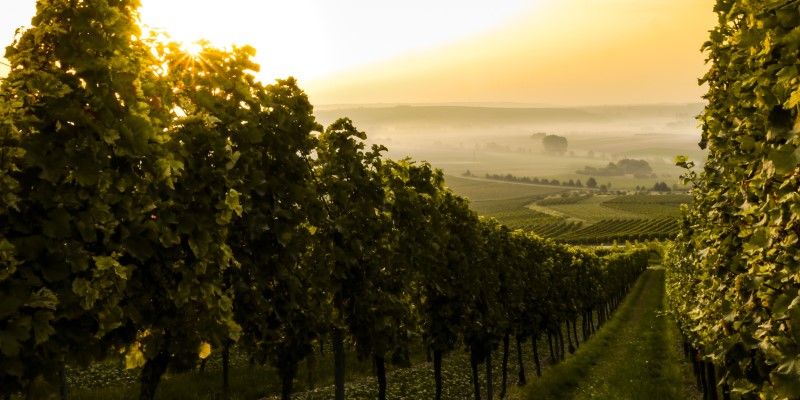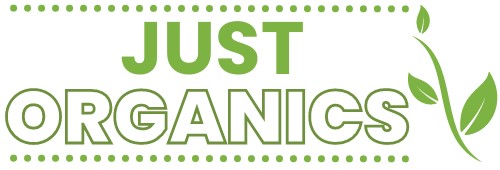As a lover of wine, you might be curious about the future of the Australian wine industry. In this article, we will explore what sustainable wine means and how Australia is leading the way in implementing environmentally-friendly practices. As wine growers face increasing environmental challenges, it becomes crucial to adopt sustainable methods for long-term success. Join us as we delve into the world of sustainable wine growing and discover what lies ahead for the Australian wine industry.
Key Takeaways
- Sustainable Winegrowing Australia (SWA) is an industry-led initiative that provides guidelines and tools for vineyard management, encouraging the adoption of sustainable practices nationwide.
- Australian researchers continuously work to improve sustainability in wine production, focusing on vineyard resilience in climate change, exploring alternative irrigation techniques, and developing eco-friendly pest control methods.
- Australia has been recognized as a global leader in sustainable viticulture practices, with its commitment to sustainable winegrowing and implementation of environmentally conscious practices positioning it as a role model and contributing to reducing global environmental impact.
- The future outlook for wine production in Australia emphasizes the importance of sustainability and adaptation to environmental factors, including implementing organic and biodynamic farming, water conservation measures, and reducing greenhouse gas emissions.
Table of Contents

What is Sustainable Wine?
Sustainable wine is the practice of producing wine in an environmentally responsible and socially conscious manner. In Australia, sustainable wine growing has become increasingly important as the industry strives to reduce its environmental impact and promote long-term sustainability. Vineyards across the country are implementing practices that conserve water, reduce pesticide use, and protect biodiversity. A commitment to ecological balance, economic viability, and social responsibility characterizes sustainable wine growing in Australia.
Certification programs such as Sustainable Winegrowing Australia (SWA) ensure vineyards meet specific sustainability criteria. These criteria cover a range of areas, including energy efficiency, waste management, water conservation, and social equity. By adhering to these standards, Australian vineyards can demonstrate their commitment to sustainable practices and gain consumer trust.
The Australian wine industry recognizes that sustainability is not just about protecting the environment; it also encompasses social and economic aspects. By embracing sustainable winegrowing practices, the industry aims to create a future where Australian wines are not only globally recognized for their quality but also admired for their commitment to sustainability.
Sustainable Winegrowing Australia
To ensure the longevity of your vineyards, it’s important to adopt environmentally-friendly practices. Sustainable Winegrowing Australia (SWA) is a leading initiative in the Australian wine industry that promotes sustainable practices among grape growers and winemakers. SWA aims to minimize the environmental impact of wine production while maintaining high-quality standards. This organization provides resources and guidelines for vineyard owners to implement sustainable farming methods, such as reducing pesticide use, conserving water, and managing waste effectively. Through SWA’s sustainability initiatives, Australian wineries are encouraged to prioritize biodiversity conservation and invest in renewable energy sources. By adopting these practices, grape growers and winemakers can create wines that not only meet consumer demand but also make a commitment to the environment, which ticks all the boxes for the sustainable future of Australia’s wine industry.
Environmental Challenges for Wine Growers
Environmental challenges pose an ongoing risk to Australian grape growers. As a result, winemakers need to focus on the key points of renewable energy, water management, soil management, and climate change. Wine growers are increasingly adopting renewable energy sources to reduce their carbon footprint and dependence on fossil fuels. Effective water management strategies are crucial for sustainable wine growing as drought conditions become more frequent. Soil management practices play a vital role in maintaining the health and fertility of vineyards. At the same time, climate change poses significant risks, such as increased temperatures and extreme weather events that can impact grape production. Let’s look at these in a little more detail:
Renewable energy
You can reduce your carbon footprint by implementing renewable energy solutions in your vineyard. The sustainable future of the Australian wine industry heavily relies on adopting renewable energy practices. South Australia, being a major player in the wine industry, has set an exemplary standard by embracing clean energy sources. Here are four ways you can incorporate renewable energy into your vineyard:
- Solar power: Install solar panels to generate electricity from sunlight, reducing reliance on fossil fuels.
- Wind turbines: Harness wind power to generate clean and sustainable energy for your winery operations.
- Bioenergy: Utilize organic waste from grape processing to produce biogas or biofuels for heating and powering machinery.
- Geothermal systems: Tap into the natural heat beneath the earth’s surface to regulate temperature and reduce energy consumption.
By adopting these renewable energy solutions, you contribute to a sustainable future and showcase environmental leadership within the wine industry, setting an example for others to follow.

Water Management
When managing your vineyard, it’s important to prioritize efficient water usage and conservation. Water management plays a crucial role in sustainable wine growing, especially in regions like Riverland and Barossa that are prone to drought conditions. Implementing effective irrigation techniques can help minimize water wastage and ensure the vines receive enough water for optimal growth. The Australian wine industry is committed to achieving the United Nations’ Sustainable Development Goals, which include responsible water management as one of its targets. To assist vineyard owners in their efforts, various initiatives have been introduced, such as utilizing smart irrigation systems that monitor soil moisture levels and weather conditions to determine watering needs accurately. By implementing these measures, the Australian wine industry aims to promote sustainable practices while maintaining the quality and integrity of its wines.
Soil Management
Now that we’ve explored the importance of water management in sustainable wine growing let’s delve into another crucial aspect: soil management. Proper soil management is essential for maintaining healthy vineyards and producing high-quality grapes.
To effectively manage soil in viticulture, there are several key practices to consider:
- Soil Testing: Regularly testing the soil helps determine its nutrient content and pH levels, allowing growers to make informed decisions about fertilization.
- Cover Crops: Planting cover crops between vine rows helps prevent erosion, improve water infiltration, and enhance organic matter content in the soil.
- Organic Matter Addition: Incorporating organic matter such as compost or mulch improves soil structure, fertility, and moisture-holding capacity.
- Weed Control: Managing weeds around grapevines reduces competition for nutrients and water while minimizing the risk of disease.
By implementing these soil management practices, Australian winegrowers can ensure sustainable vineyard ecosystems that support their industry’s long-term viability.
Climate Change
Climate change poses significant challenges to the management of vineyards and the production of high-quality grapes. As temperatures rise and weather patterns become more unpredictable, winegrowers must adapt their practices to ensure sustainability and achieve environmental management goals. One approach is adopting renewable energy sources to reduce greenhouse gas emissions and work towards net zero emissions. Vineyards can generate clean energy by investing in solar panels or wind turbines while minimizing their carbon footprint.
Additionally, implementing water conservation strategies is crucial as droughts become more frequent. This can include using drip irrigation systems and mulching to retain moisture in the soil. Finally, implementing biodiversity measures such as planting cover crops or creating wildlife habitats can help maintain a healthy ecosystem within vineyard landscapes. By addressing climate change through sustainable practices, the Australian wine industry can continue producing high-quality grapes while working towards a more environmentally friendly future.
How is Australia Leading the Way in Sustainable Wine Growing
You can see how Australia is leading the way in sustainable wine growing. The Australian wine industry has made significant efforts to prioritize sustainability and minimize its environmental impact. Here are three key ways Australia is setting an example:
- Sustainable Practices: Australian winemakers have implemented various sustainable practices, such as organic and biodynamic farming methods, water conservation techniques, and renewable energy usage. These initiatives aim to reduce carbon emissions, conserve natural resources, and promote biodiversity.
- Certification Programs: Australia has developed rigorous certification programs like Sustainable Winegrowing Australia (SWA). This industry-led initiative provides guidelines and tools for vineyard management, encouraging growers to adopt sustainable practices nationwide.
- Research and Innovation: Australian researchers continuously strive to develop innovative solutions for sustainable wine growing. They focus on improving vineyard resilience in the face of climate change, exploring alternative irrigation techniques, and finding eco-friendly pest control methods.
Australia’s commitment to sustainable wine growing positions it as a global leader in environmentally conscious viticulture practices.

The Future of Winegrowing in Australia
If you’re interested in the outlook for wine production in Australia, exciting advancements are on the horizon. The future of wine growing in Australia heavily focuses on sustainability and adapting to environmental factors. Winegrowers increasingly recognise the importance of sustainable practices to ensure the longevity of the Australian wine industry. They are implementing innovative techniques such as organic and biodynamic farming, water conservation measures, and reducing greenhouse gas emissions. These practices benefit the environment, improve grape quality, and ultimately produce better wines.
The Australian wine industry is committed to reducing its carbon footprint by exploring renewable energy sources and implementing efficient winery operations. Additionally, research into climate change adaptation is crucial for ensuring vineyards can withstand extreme weather events, such as heatwaves or droughts. By embracing sustainable practices and addressing environmental challenges head-on, the future of wine growing in Australia looks promising.
Frequently Asked Questions
1. What is sustainable winegrowing?
Sustainable winegrowing is a grape and wine production approach that focuses on minimizing environmental impact, promoting social responsibility, and ensuring economic viability. It involves implementing sustainable practices in vineyards and wineries to support a sustainable future for the Australian wine industry.
2. How does the Australian wine industry promote sustainability?
The Australian wine industry, represented by organizations like Wine Australia and Sustainable Winegrowing Australia (SWA), encourages sustainable practices among vineyards and wineries. They provide certification programs, training, and resources to help winegrowers and winemakers adopt sustainable practices and reduce their environmental footprint while maintaining high-quality wines.
3. What are some examples of sustainable practices in the Australian wine industry?
Some sustainable practices include using renewable energy sources like solar panels, implementing efficient water management systems, practising biodiversity conservation, minimizing waste through proper waste management, reducing carbon footprint, and adopting organic certification for grape cultivation.
4. How can I identify sustainable wines?
To identify sustainable wines, look for certifications or labels that indicate sustainable wine production. Certified members of Sustainable Winegrowing Australia (SWA) follow sustainable practices and can display the SWA logo on their bottles. Additionally, some wineries may explicitly mention their commitment to sustainability on their labels or websites.
5. What is the certification process for sustainable winegrowing?
The certification process involves compliance with sustainable sustainability criteria Sustainable Winegrowing Australia (SWA) set. Vineyards and wineries undergo audits and assessments to ensure they meet the required standards. Once approved, they become certified members and can promote their sustainability credentials.
6. Are all Australian wines sustainable?
Not all Australian wines are sustainable. However, there is a growing number of wineries and vineyards actively working towards sustainability goals. By supporting wineries with sustainability initiatives, you can contribute to a more sustainable future for the Australian wine industry.
7. How does sustainable winegrowing benefit the environment?
Sustainable winegrowing benefits the environment by reducing the use of harmful chemicals, conserving water resources through efficient irrigation, promoting biodiversity and habitat conservation, and minimizing carbon emissions. These practices contribute to a healthier ecosystem and help mitigate the impacts of climate change.
Sustainable Winegrowing Australia: Conclusion
Sustainable wine growing in Australia is paving the way for a prosperous future in the country’s wine industry. With a focus on environmentally friendly practices and responsible vineyard management, Australian winegrowers are leading the charge in sustainability. By addressing the environmental challenges faced by growers and implementing innovative solutions, such as organic farming methods and water conservation techniques, the industry is ensuring its longevity while minimizing its impact on the planet. As consumers increasingly prioritize sustainability, Australia’s commitment to sustainable winegrowing positions it as a global leader in the field.
About the Author

ALEX
Alex is an adventurous guy in his early 30s who embodies a touch of the hippie. Passionate about social and environmental causes, he’s managed to travel the world, from immersing himself in Japanese culture for a year to embarking on a six-month backpacking escapade through Peru. Alex loves to learn and has taken numerous courses in Environmental Science and Conservation.
Alex’s commitment to recycling fuels his mission to repurpose discarded items. As a result, he favours garage sale treasures over department stores. He prefers walking and biking to driving. Alex spreads awareness about organic living through Just Organics, joined by his like-minded friend Charlie.
